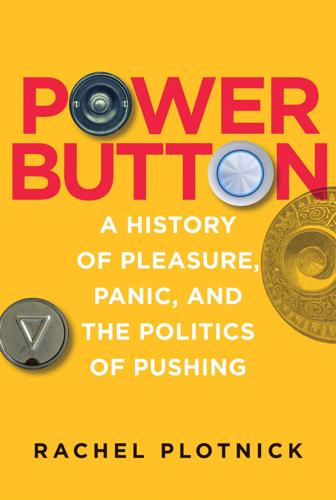
Power Button: A History of Pleasure, Panic, and the Politics of Pushing
by
Rachel Plotnick
Published 24 Sep 2018
The latter features a number of chapters on historical narratives of touch and technology, but these essays focus on keys and typing rather than the broader set of changes in hand practices, hand environments, and hand relationships as detailed in Power Button. 5. See Carolyn Marvin, When Old Technologies Were New: Thinking About Electric Communication in the Late Nineteenth Century (New York: Oxford University Press, 1988). 6. For a useful explication of the term “digital” in the digital age as referring to hands and digital computing, see Benjamin Peters, “Digital,” in Digital Keywords: A Vocabulary of Information Society and Culture, ed.
…
“What One Electric Bell Did,” Galveston Daily News, November 4, 1889: 6. 105. Barnard, “Some Queer Houses,” 2. 106. “Odd Phases of Chicago Life as Presented to an Observer in a Single Day,” Chicago Daily Tribune, May 4, 1896: 1. 107. Conflicts often occurred between expert and layperson groups, creating “in” and “out” groups. See Carolyn Marvin, When Old Technologies Were New: Thinking About Electric Communication in the Late Nineteenth Century (New York: Oxford University Press, 1988). 108. “Peculiar Electrical Accident,” Medical News 85, no. 23 (1904): 1092. 109. James Lee Humfreville, Twenty Years among Our Savage Indians: A Record of Personal Experiences, Observations, and Adventures among the Indians of the Wild West (Hartford, CT: The Hartford Publishing Company, 1897), 592. 110.
…
Schaeffer, “Grand Opening Ceremony,” Pennsylvania School Journal 42 (1893): 13. 21. Arthur E. Kennelly, “The Evolution of Electric and Magnetic Physics,” in Evolution in Science, Philosophy, and Art, ed. Brooklyn Ethical Association (New York: D. Appleton and Company, 1891), 153. 22. Carolyn Marvin, When Old Technologies Were New: Thinking About Electric Communication in the Late Nineteenth Century (New York: Oxford University Press, 1988), 151. 23. F. Herbert Stead, “An Englishman’s Impressions at the Fair,” Review of Reviews 8 (1893): 32. 24. Schaeffer, “Grand Opening Ceremony,” 13. 25. “Mrs. Cleveland’s Touch,” North American, August 24, 1886. 26.

Age of the City: Why Our Future Will Be Won or Lost Together
by
Ian Goldin
and
Tom Lee-Devlin
Published 21 Jun 2023
Chapter 6 – Cities, Cyberspace and the Future of Community 1 Turner, F., 2006, From Counterculture to Cyberculture (University of Chicago Press), p. 13. 2 Authors’ calculations based on General Social Survey data. 3 Rajan, The Third Pillar. 4 Putnam, R., 2000, Bowling Alone (Simon & Schuster). 5 Ibid. 6 Haidt, J., 2022, ‘Why the past 10 years of American life have been uniquely stupid’, The Atlantic. 7 McLuhan, M., 1962, The Gutenberg Galaxy (University of Toronto Press). 8 Marvin, C., 1988, When Old Technologies Were New (Oxford University Press), pp. 199–200. 9 Ibid. 10 Deibert, R., 1997, Parchment, Printing, and Hypermedia: Communication in World Order Transformation (Columbia University Press). 11 Anderson, B., 1983, Imagined Communities (Verso). 12 Prior, M., 2007, Post-Broadcast Democracy: How Media Choice Increases Inequality in Political Involvement and Polarizes Elections (Cambridge University Press), p. 1. 13 Pool, I., 1983, Forecasting the Telephone (Praeger). 14 Fischer, C., 2007, ‘Technology and society: historical complexities’, Sociological Inquiry, Vol. 67, No. 1. 15 Chen, W., 2013, ‘Internet use, online communication, and ties in Americans’ networks’, Social Science Computer Review, Vol. 31, No. 4. 16 Haidt, ‘Why the past 10 years of American life have been uniquely stupid’. 17 Van Alstyne, M. and Brynjolfsson, E., 1997, ‘Electronic communities: global village or cyberbalkans’, Economic Theory. 18 Sunstein, C., 2007, ‘Neither Hayek nor Habermas’, Public Choice, Vol. 134. 19 Tempest, K., 2021, On Connection (Faber & Faber), p. 61. 20 Bor, A. and Bang Petersen, M., 2021, ‘The psychology of online political hostility: a comprehensive, cross-national test of the mismatch hypothesis’, American Political Science Review, Vol. 116, No. 1. 21 Ibid. 22 Prapotnik, K., et al., 2019, ‘Social media as information channel’, Austrian Journal of Political Science. 23 Grant, A., Twitter, 29 August 2021, 15:03. 24 Cho, J., et al., 2020, ‘Do search algorithms endanger democracy?
…
Marshall, A., 1890, Principles of Economics (reprint by Nabu Press, 2010). Marshall, T., 2015, Prisoners of Geography (Elliott & Thompson). Martine, G., et al., 2013, ‘Urbanization and fertility decline: Cashing in on structural change’, IIED Human Settlements Working Paper. Marvin, C., 1988, When Old Technologies Were New (Oxford University Press). Marx, B., et al., 2013, ‘The economics of slums in the developing world’, Journal of Economic Perspectives, Vol. 27, No. 4. Mathis, W. and Kar, T., 2022, ‘UK temperatures reach highest on record, Met Office says’, Bloomberg News. Matsu, J., et al., 2022, ‘Investing in regional equality – lessons from four cities’, Chartered Institute of Public Finance and Accountancy (cipfa.org).

Custodians of the Internet: Platforms, Content Moderation, and the Hidden Decisions That Shape Social Media
by
Tarleton Gillespie
Published 25 Jun 2018
Facebook publicized the vote only the second time around, with an email to all users, perhaps to avoid a binding decision they didn’t want. Ryan Tate, “How You Killed Facebook Democracy: A Short History,” Wired, December 10, 2012, https://www.wired.com/2012/12/you-killed-facebook-democracy/. 17Kelty, “Geeks, Social Imaginaries, and Recursive Publics.” 18Marvin, When Old Technologies Were New; Douglas, Inventing American Broadcasting; Wu, The Master Switch. 19Silverstone, Media and Morality, 167. BIBLIOGRAPHY ACKER, AMELIA, AND BRIAN BEATON. 2016. “Software Update Unrest: The Recent Happenings around Tinder and Tesla.” In Hawaii International Conference on System Sciences, Proceedings of the 49th Annual Conference, 1891–1900.
…
William and Mary Law Review 47: 239–308. MANOVICH, LEV. 2001. The Language of New Media. Cambridge: MIT Press. MANSELL, ROBIN. 2015. “The Public’s Interest in Intermediaries.” Info 17 (6): 8–18. MARSTON, SALLIE A. 2000. “The Social Construction of Scale.” Progress in Human Geography 24 (2): 219–42. MARVIN, CAROLYN. 1990. When Old Technologies Were New: Thinking about Electric Communication in the Late Nineteenth Century. New York: Oxford University Press. MARWICK, ALICE E. 2008. “To Catch a Predator? The MySpace Moral Panic.” First Monday 13 (6). http://firstmonday.org/htbin/cgiwrap/bin/ojs/index.php/fm/article/viewArticle/2152. ———. 2015.
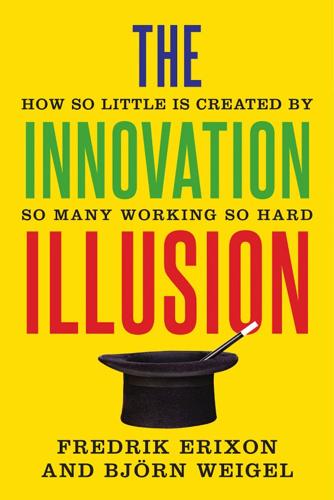
The Innovation Illusion: How So Little Is Created by So Many Working So Hard
by
Fredrik Erixon
and
Bjorn Weigel
Published 3 Oct 2016
71.Roine and Waldenström, “On the Role of Capital Gains in Swedish Income Inequality.” 72.Konjunktur Institutet, “Lönebildningsrapporten,” 30. 73.US President, “Economic Report,” 34. 74.US President, “Economic Report,” 34. 75.Mokyr, “What Today’s Economic Gloomsayers Are Missing.” 76.Marvin, When Old Technologies Were New. 77.Frey and Osborne, “The Future of Employment,” 45. 78.Ford, Rise of the Robots, 284. 79.Kan, “Foxconn Expects Robots to Take over More Factory Work.” 80.Kan, “Foxconn Expects Robots to Take over More Factory Work.” 81.Kan, “Foxconn’s CEO Backpedals on Robot Takeover at Factories.” 82.IFR, “Robots Improve Manufacturing Success and Create Jobs.” 83.Graetz and Michaels, “Robots at Work.” 84.Fox Nation, “Obama Blames ATMs for High Unemployment.” 85.Bessen, Learning by Doing, 108. 86.Approximately in 1745 in England, and one year later in France. 87.Joyce, Ulysses, 82. 88.Rothschild, “The Sourdough Hotel.” 89.Marx and Engels, The Communist Manifesto, 12. 90.Haltiwanger, Hathaway, and Miranda, “Declining Business Dynamism in the US High-Technology Sector,” 1. 91.Andrews, Criscuolo, and Gal, “Frontier Firms, Technology Diffusion and Public Policy,” 14. 9 The Future and How to Prevent It 1.Toynbee, A Study of History: Abridgement of Volumes I–VI, 273. 2.Buiter, Rahbari, and Seydl, “The Long-Run Decline in Advanced-Economy Investment.” 3.Kotlikoff and Burns, The Clash of Generations, 229. 4.Wilson and Purushothaman, “Dreaming with BRICs.” 5.Xie, “Goldman’s BRIC Era Ends.” 6.Das, India Grows at Night. 7.Magnus, “Hitting a BRIC Wall.” 8.IMF, “Adjusting to Lower Commodity Prices.” 9.Hoenig, “Back to Basics.” 10.The Economist, “One Regulator to Rule Them All.” 11.Zingales, “Does Finance Benefit Society?”
…
Startup Genome, Aug. 29, 2011. At http://innovationfootprints.com/wp-content/uploads/2015/07/startup-genome-report-extra-on-premature-scaling.pdf. Marris, Robin, The Economic Theory of ‘Managerial’ Capitalism. Macmillan, 1964. Martti, Häikiö, Nokia: The Inside Story. Prentice Hall, 2002. Marvin, Carolyn, When Old Technologies Were New: Thinking about Electronic Communications in the Late 19th Century. Oxford University Press, 1988. Marx, Karl, Capital: A Critique of Political Economy (1867). Modern Library, 1906. Marx, Karl, and Friedrich Engels, The Communist Manifesto. Penguin Classics, 2015. Mason, Paul, Postcapitalism: A Guide to Our Future.
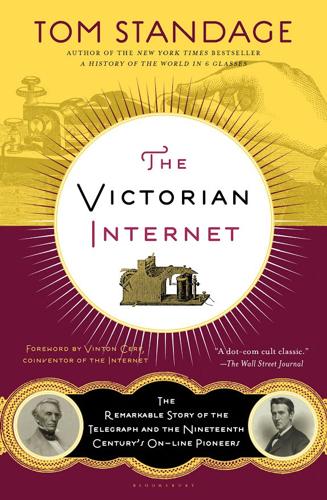
Victorian Internet
by
Tom Standage
Published 1 Jan 1998
The Electric Telegraph: A Social and Economic History. Newton Abbot: David and Charles, 1973. Lebow, Irwin. Information Highways and Byways: From the Telegraph to the vst Century. New York: IEEE Computer Society Press, 1995. Marland, Edward Allen. Early Electrical Communication. London: Abelard-Schumann, 1964. Marvin, Carolyn. When Old Technologies Were New-. Thinking About Electric Communication in the Late Nineteenth Century. New York and Oxford: Oxford University Press, 1988. Morse, Samuel F. B., and Edward Lind Morse. Samuel F. B. Morse: His Letters and Journals, Edited and Supplemented by His Son Edward Lind Morse. Boston: Houghton Mifflin, 1914.
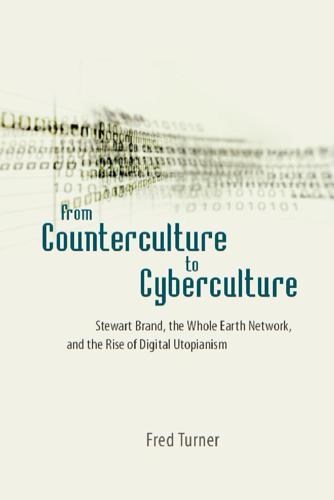
From Counterculture to Cyberculture: Stewart Brand, the Whole Earth Network, and the Rise of Digital Utopianism
by
Fred Turner
Published 31 Aug 2006
Finally, many analysts have focused on the role of the press, both professional and popular, in shaping popular perceptions of new technologies. As Carolyn Marvin has shown in the case of electricity, for instance, the press can serve as both a powerful shaper of emerging technologies and a deep repository of the public’s hopes and fears for the new devices. Marvin, When Old Technologies Were New. 12. Tesler, interview, July 26, 2001; Allison, interview, July 26, 2004. 13. For an overview of the traditional accounts and a critical study of the field, see Schudson, Sociology of News. Schudson, in Discovering the News, identifies journalistic norms as historical constructions. 14.
…
Marshall McLuhan: The Medium and the Messenger. New York: Ticknor and Fields, 1989. Markoff, John. What the Dormouse Said . . . How the 60s Counterculture Shaped the Personal Computer Industry. New York: Viking Penguin, 2005. Markoff, John, Phillip Robinson, and Ezra Shapiro. “Up to Date.” Byte, March 1985. Marvin, Carolyn. When Old Technologies Were New: Thinking about Electric Communication in the Late Nineteenth Century. New York: Oxford University Press, 1988. Mauss, Marcel, and W. D. Halls. The Gift: The Form and Reason for Exchange in Archaic Societies. New York: Norton, 1990. May, Elaine Tyler. Homeward Bound: American Families in the Cold War Era.

The Zero Marginal Cost Society: The Internet of Things, the Collaborative Commons, and the Eclipse of Capitalism
by
Jeremy Rifkin
Published 31 Mar 2014
Brock, The Telecommunications Industry: The Dynamics of Market Structure (Cambridge, MA: Harvard University Press, 1981), 161. 41. “Wireline Local Market Concentration,” The Columbia Institute for Tele-Information, http://www4.gsb.columbia.edu/filemgr?file_id=739241 (accessed June 19, 2013). 42. Carolyn Marvin, When Old Technologies Were New: Thinking about Electric Communication in the Late Nineteenth Century (New York: Oxford University Press, 1988), 164. 43. David E. Nye, Electrifying America: Social Meanings of a New Technology, 1880–1940 (Cambridge, MA: MIT Press, 1991), 239. 44. Ibid., 186. 45. Henry Ford and Samuel Crowther, Edison as I Know Him (New York: Cosmopolitan Books, 1930), 30. 46.
…
Consent of the Networked. New York: Basic Books, 2012. Macpherson, Crawford B. Democratic Theory. Oxford University Press, 1973. Margulis, Lynn. Symbiotic Planet. New York: Basic Books, 1998. Marsh, Peter. The New Industrial Revolution. London: Yale University Press, 2012. Marvin, Carolyn. When Old Technologies Were New: Thinking About Electric Communication in the Late Nineteenth Century. New York: Oxford University Press, 1988. Marx, Karl. Capital. Oxford, UK: Oxford University Press, 1995. Mason, Paul. Why It’s Kicking Off Everywhere. London: Verso, 2012. May, Christopher. A Global Political Economy of Intellectual Property Rights.
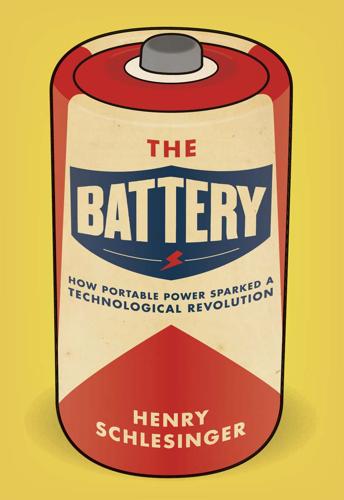
The Battery: How Portable Power Sparked a Technological Revolution
by
Henry Schlesinger
Published 16 Mar 2010
Reddy, Ph.D., “Battery Power for the Future: Is the Energy Output of Batteries Reaching Its Limit?” Battery Power Products & Technology, March/April 2008. ———. Handbook of Batteries. 3d ed. New York: McGraw-Hill, 2002. “Marvelous Electrical Inventions Displayed, Attractions at a ‘Conversazione’ at Columbia University.” New York Times, April 13, 1901. Marvin, Carolyn. When Old Technologies Were New: Thinking about Electricity Communication in the Late Nineteenth Century. New York: Oxford University Press, 1988. Massie, Keith, and Stephen D. Perry. “Hugo Gernsback and Radio Magazines: An Influential Intersection in Broadcast History.” Journal of Radio Studies 9, no. 2 (2002). McElroy, Gil.

The Empathic Civilization: The Race to Global Consciousness in a World in Crisis
by
Jeremy Rifkin
Published 31 Dec 2009
Cambridge, MA: Belknap Press of Harvard University Press, 1977. p. 89. 25 Kern, Stephen. The Culture of Time and Space 1880-1918. Cambridge, MA: Harvard University Press, 1983. p. 12. 26 Landes, David S. Revolution in Time. Cambridge, MA: Harvard University Press, 1983. pp. 285-286. 27 Marvin, Carolyn. When Old Technologies Were New: Thinking About Electric Communication in the Late Nineteenth Century. New York: Oxford University Press, 1988. p. 64. 28 Ibid. p. 87. 29 Ibid. p. 163. 30 Ibid. p. 164. 31 Ibid. p. 11. 32 Nye, David E. Electrifying America: Social Meanings of a New Technology, 1880-1940. Cambridge, MA: MIT Press, 1991. p. 239. 33 Ibid. p. 186. 34 Ibid. 35 Ford, Henry, and Samuel Crowther.
…
One-Dimensional Man. Boston: Beacon Press, 1964. Marcuse, Herbert. Eros and Civilization. Boston: Beacon Press, 1966. ———. An Essay on Liberation. Boston: Beacon Press, 1969. Marris, Peter. The Politics of Uncertainty: Attachment in Private and Public Life. London: Routledge, 1996. Marvin, Carolyn. When Old Technologies Were New: Thinking About Electric Communication in the Late Nineteenth Century. New York: Oxford University Press, 1988. Marx, Leo. The Machine in the Garden: Technology and the Pastoral Ideal in America. New York: Oxford University Press, 1964. Maslow, Abraham H. The Psychology of Science: A Reconaissance.

The Cultural Logic of Computation
by
David Golumbia
Published 31 Mar 2009
The Political Theory of Possessive Individualism: Hobbes to Locke. New York: Oxford University Press. Manning, Christopher D., and Hinrich Schütze. 1999. Foundations of Statistical Natural Language Processing. Cambridge, MA: The MIT Press. Manovich, Lev. 2001. The Language of New Media. Cambridge, MA: The MIT Press. Marvin, Carolyn. 1988. When Old Technologies Were New: Thinking About Electric Communication in the Late Nineteenth Century. New York: Oxford University Press. Marx, Leo. 1964. The Machine in the Garden: Technology and the Pastoral Ideal in America. New York: Oxford University Press. Massumi, Brian. 2002. Parables for the Virtual: Movement, Affect, Sensation.
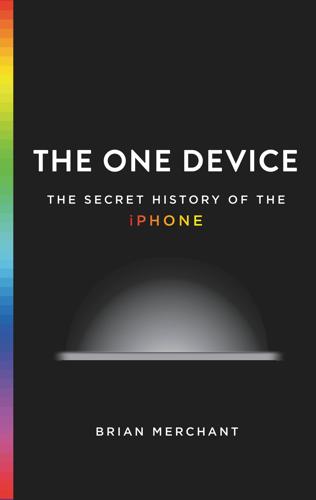
The One Device: The Secret History of the iPhone
by
Brian Merchant
Published 19 Jun 2017
Kristina Woolsey, the onetime director of Apple’s Multimedia Lab, and Fabrice Florin, a former executive producer at Apple, provided context. Herbert Casson’s The History of the Telephone—published in 1910 and available to read for free on iBooks—was a fascinating look at telephony from the same perspective we have of the iPhone today, a decade or so after its popularization. Carolyn Marvin’s When Old Technologies Were New provided context about the dawn of the electric age. Agar’s Constant Touch was a reference on the evolution of mobile technologies. Albert Robida’s The Twentieth Century is a portentous look at how audiovisual technologies might evolve. Other sources include “As We May Think” by Vannevar Bush, which imagines the future of human knowledge augmentation and the memex; J.C.R.
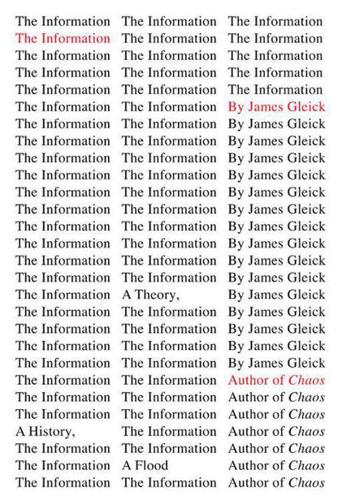
The Information: A History, a Theory, a Flood
by
James Gleick
Published 1 Mar 2011
New York: Oxford University Press, 1998. Marland, E. A. Early Electrical Communication. London: Abelard-Schuman, 1964. Martin, Michèle. “Hello, Central?”: Gender, Technology, and Culture in the Formation of Telephone Systems. Montreal: McGill–Queen’s University Press, 1991. Marvin, Carolyn. When Old Technologies Were New: Thinking About Electric Communication in the Late Nineteenth Century. New York: Oxford University Press, 1988. Maxwell, James Clerk. Theory of Heat. 8th ed. London: Longmans, Green, 1885. Mayr, Otto. “Maxwell and the Origins of Cybernetics.” Isis 62, no. 4 (1971): 424–44. McCulloch, Warren S.
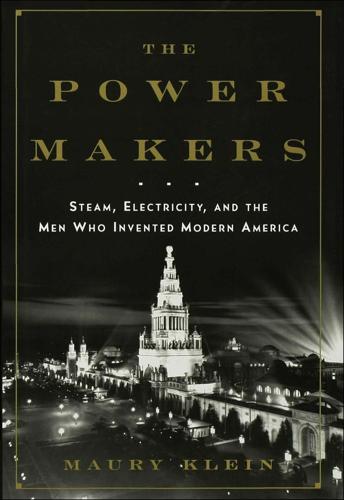
The Power Makers
by
Maury Klein
Published 26 May 2008
Light and Work (New York, 1924). Lynd, Robert S., and Helen M. Lynd. Middletown: A Study in American Culture (New York, 1929). ———. Middletown in Transition: A Study in Cultural Conflicts (New York, 1937). Maril, Nadja. American Lighting, 1840–1940 (West Chester, Pa., 1995). Marvin, Carolyn. When Old Technologies Were New (New York, 1988). McCabe, James D., Jr. New York by Gaslight (New York, 1984 [1882]). Mumford, Lewis. Technics and Civilization (New York, 1934). O’Dea, William Thomas. The Social History of Lighting (London, 1958). Pierce, Bessie Louise. A History of Chicago (New York, 1937–57), 3 vols.

The Rise and Fall of American Growth: The U.S. Standard of Living Since the Civil War (The Princeton Economic History of the Western World)
by
Robert J. Gordon
Published 12 Jan 2016
New York: Palgrave MacMillan. Marsh, Bill. (2008). “The Overflowing American Dinner Plate,” The New York Times, August 3, Sunday business section, p. 7. Martí-Ibañez, Félix. (1958). Centaur: Essays on the History of Medical Ideas. New York: MD Publications. Marvin, Caroline. (1988). When Old Technologies Were New: Thinking about Electric Communication in the Late Nineteenth Century. New York/Oxford, UK: Oxford University Press. Mayo, James M. (1993). The American Grocery Store: The Business Evolution of an Architectural Space. Westport, CT/London: Greenwood Press. McCarthy, Jeanette J., McLeod, Howard L., and Ginsburg, Geoffrey S. (2013).